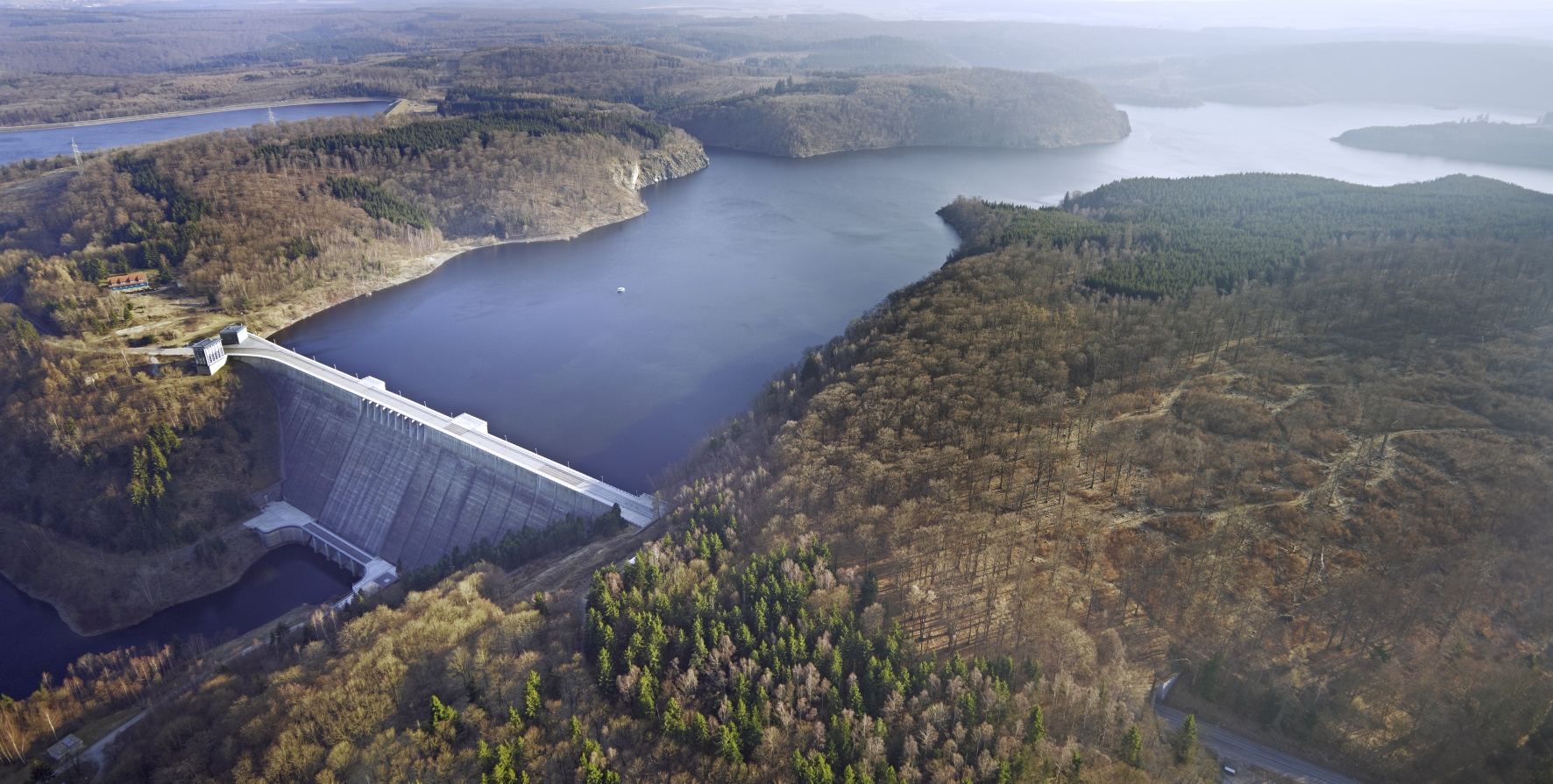Intensive Test Site Rappbode Reservoir
Understanding of DOC, water and solute fluxes within a the catchment of a drinking water reservoir
The Rappbode Reservoir provides drinking water to more than 1 Mio people in central eastern Germany. Having a maximum depth of almost 90 m and a maximum volume of about 100 Mio m3, this reservoir is the largest drinking water reservoir in Germany. The three major tributaries (Bode, Hassel & Rappbode) into the reservoir, each of them being separately damed by smaller pre-dams, are contrasted by different land use characteristics with large differences in nutrient load and DOC export.
Given the relatively short residence times within the reservoirs the dynamics in the water body are tightly coupled to the biogeochemical processes in their catchment. Accordingly, the aim of this observation is to study the interactions between catchment and surface waters. We are interested in quantifying the exports of carbon and nutrients from the catchment and understanding the driving variables of this flux of matter from the terrestrial environment into surface waters. Moreover, we study how these exported nutrients or organic carbon compounds are processed within the lacustrine ecosystem.
 A currently highly important topic in our research is the dynamics of dissolved organic carbon (DOC) in drinking water reservoirs. A consistent trend of increasing concentrations of DOC has been observed over the past 20 years in the Rappbode Reservoir leading to a degrading water quality and problems in the drinking water preparation in the nearby water works.
A currently highly important topic in our research is the dynamics of dissolved organic carbon (DOC) in drinking water reservoirs. A consistent trend of increasing concentrations of DOC has been observed over the past 20 years in the Rappbode Reservoir leading to a degrading water quality and problems in the drinking water preparation in the nearby water works.
At nine locations in and around the reservoir system we are continuously observing dynamics in physical, chemical and biological parameters. This includes stations at all tributaries, at the connecting infrastructures in between the pre-dams and the main reservoirs, as well as within the main reservoir and its outlet. Besides automated sampling stations we also conduct a detailed limnological monitoring programme in the water bodies on a fortnightly sampling regime. Close cooperations have been initialised with the reservoir authority (Talsperrenbetrieb Sachsen-Anhalt) and the drinking water company (Fernwasserversorgung Elbaue Ostharz) leading to an active exchange of data and knowledge.
Active research projects are focused on the dynamics of DOC, nutrient removal in the pre-dams, and numerical modelling of hydrodynamics and plankton dynamics.
Contact:






